How bringing nature into your workspace can jump-start productivity
Spring is officially here. It’s beautiful outside, and let me guess: You are spending all of your time indoors. Don’t worry, you’re in good company. On average people spend 90% of their time indoors. Not to mention that the other 10% is probably mostly spent in cars or other built environments. Workers in cubicles spend eight hours every day in a small gray box, separated from human interaction, marinating in stagnant air and fluorescent lighting. It’s cramped, uncomfortable, and unhealthy. One 2018 study found that workers in cubicles were 31.83% less active and reported being 9.10% more stressed at the office compared with workers in open bench seating. Not to mention that over time, chronic stress can lead to a host of negative health effects such as weight gain, trouble concentrating, irritability, lower rates of healing, and high blood pressure. In contrast, the field of biophilic design aims to create spaces that optimize productivity and well-being. In the roughly 300,000 years humans have been on Earth, offices have only really been around the past few hundred years. Biophilic architecture is based on the concept that humans evolved in natural environments, and because of this, we feel the best when these factors are mimicked. Incorporation or mimicry of the natural world into our built spaces can greatly improve peoples’ health, happiness, and productivity. Researchers have found that harnessing biophilic design can lead to powerful effects, such as buildings that make employees more productive, hospitals that heal people faster, and apartment complexes that reduce crime. However, you don’t need to invest billions of dollars to access the benefits of biophilic design—research has found that even small changes can have big impacts. Here are a few simple ways that you can leverage biophilic design in your workspaces to improve your well-being and productivity. [Images: Mike Von/Unsplash, munandme/iStock/Getty Images Plus] Start bringing plants to work The first step to creating a more biophilic workplace can be as simple as bringing a few plants to work. According to a field study published in the Frontiers in Psychology journal in 2023, adding plants into workplaces without views of greenery significantly increased employee workplace satisfaction and sense of privacy, modulated humidity, and improved opinions on workplace attractiveness, while decreasing health-related complaints. According to biophilic design consultant Sonja Bochart, “Even the smallest plant can make a difference.” In fact, according to a 2020 study, researchers found that 27% of participants saw a significant reduction of pulse rate when staring at a small plant on their desk, in comparison to a blank desktop monitor during breaks. Bochart especially recommends bringing in plants in an array of sizes, which “provides variety and is very pleasing to the mind and to the brain.” Research from NASA has also found that low-light and low-maintenance house plants, such as snake plants and spider plants, are great at producing oxygen and cleaning air pollutants. [Images: David Fintz/Unsplash, munandme/iStock/Getty Images Plus] Prioritize natural lighting Consistent exposure to natural sunlight can have a powerful impact on people’s health and productivity. One study found that workers in offices lit by sunlight reported an 84% decrease in symptoms such as headaches, eyestrain, and blurred vision. Bochart says that the benefits of sunlight exposure can also follow you home. Sunlight helps set people’s “circadian rhythms, which help our mood, help our development, and help our sleep and wake cycles,” she says. If you have some control over the design of your workplace, Ryan Mullenix, a partner at the international architecture and design firm NBBJ, recommends taking “opportunities to control one’s environment by adding dimmers to lighting and taking advantage of cross-ventilation [if there are operable windows] when the weather is nice.” Bochart also recommends working near windows as much as possible, which provides sunlight while also allowing people to connect with “nonrhythmic, sensory stimulation” happening outside, such as the weather, change of seasons, and animal activity. “That stimulation sensory system is really rich,” she says. If it isn’t possible to work near a window, Bochart recommends to “try to take frequent breaks and go outside, or spend time in a break room or other space with a window.” [Images: Bruno Guerrero/Unsplash, munandme/iStock/Getty Images Plus] Consider swapping pop radio for nature sounds According to a report by sustainability consulting firm Terrapin Bright Green, “office noise, especially prevalent within open-plan offices, is reportedly the factor that is most disruptive to indoor environmental quality and has been shown to increase stress and presenteeism.” Listening to nature noises could be a handy solution. One study found that listening

Spring is officially here. It’s beautiful outside, and let me guess: You are spending all of your time indoors. Don’t worry, you’re in good company. On average people spend 90% of their time indoors. Not to mention that the other 10% is probably mostly spent in cars or other built environments.
Workers in cubicles spend eight hours every day in a small gray box, separated from human interaction, marinating in stagnant air and fluorescent lighting. It’s cramped, uncomfortable, and unhealthy. One 2018 study found that workers in cubicles were 31.83% less active and reported being 9.10% more stressed at the office compared with workers in open bench seating. Not to mention that over time, chronic stress can lead to a host of negative health effects such as weight gain, trouble concentrating, irritability, lower rates of healing, and high blood pressure.
In contrast, the field of biophilic design aims to create spaces that optimize productivity and well-being. In the roughly 300,000 years humans have been on Earth, offices have only really been around the past few hundred years. Biophilic architecture is based on the concept that humans evolved in natural environments, and because of this, we feel the best when these factors are mimicked. Incorporation or mimicry of the natural world into our built spaces can greatly improve peoples’ health, happiness, and productivity.
Researchers have found that harnessing biophilic design can lead to powerful effects, such as buildings that make employees more productive, hospitals that heal people faster, and apartment complexes that reduce crime.
However, you don’t need to invest billions of dollars to access the benefits of biophilic design—research has found that even small changes can have big impacts. Here are a few simple ways that you can leverage biophilic design in your workspaces to improve your well-being and productivity.
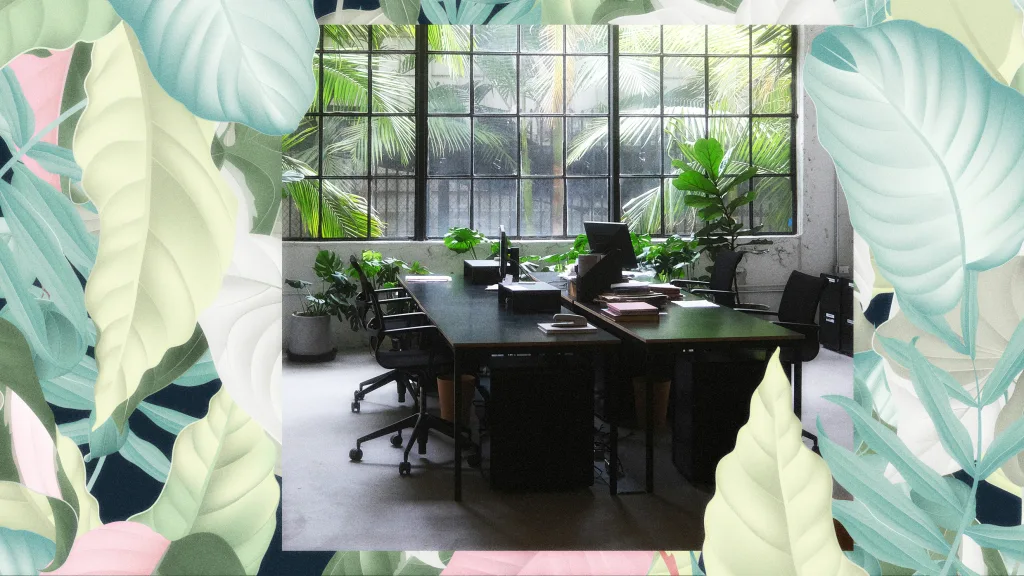
Start bringing plants to work
The first step to creating a more biophilic workplace can be as simple as bringing a few plants to work. According to a field study published in the Frontiers in Psychology journal in 2023, adding plants into workplaces without views of greenery significantly increased employee workplace satisfaction and sense of privacy, modulated humidity, and improved opinions on workplace attractiveness, while decreasing health-related complaints.
According to biophilic design consultant Sonja Bochart, “Even the smallest plant can make a difference.” In fact, according to a 2020 study, researchers found that 27% of participants saw a significant reduction of pulse rate when staring at a small plant on their desk, in comparison to a blank desktop monitor during breaks. Bochart especially recommends bringing in plants in an array of sizes, which “provides variety and is very pleasing to the mind and to the brain.”
Research from NASA has also found that low-light and low-maintenance house plants, such as snake plants and spider plants, are great at producing oxygen and cleaning air pollutants.
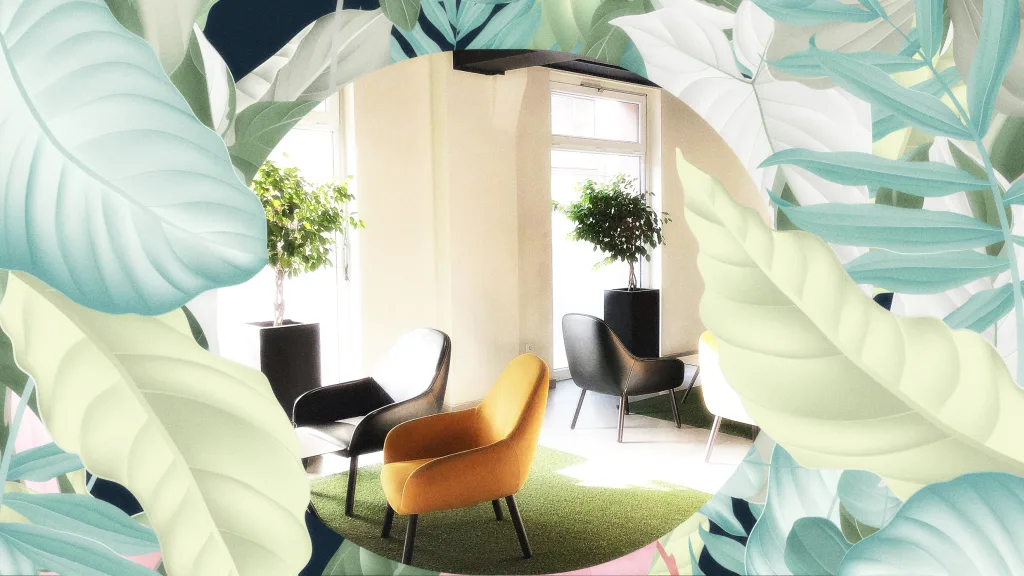
Prioritize natural lighting
Consistent exposure to natural sunlight can have a powerful impact on people’s health and productivity. One study found that workers in offices lit by sunlight reported an 84% decrease in symptoms such as headaches, eyestrain, and blurred vision.
Bochart says that the benefits of sunlight exposure can also follow you home. Sunlight helps set people’s “circadian rhythms, which help our mood, help our development, and help our sleep and wake cycles,” she says.
If you have some control over the design of your workplace, Ryan Mullenix, a partner at the international architecture and design firm NBBJ, recommends taking “opportunities to control one’s environment by adding dimmers to lighting and taking advantage of cross-ventilation [if there are operable windows] when the weather is nice.”
Bochart also recommends working near windows as much as possible, which provides sunlight while also allowing people to connect with “nonrhythmic, sensory stimulation” happening outside, such as the weather, change of seasons, and animal activity. “That stimulation sensory system is really rich,” she says.
If it isn’t possible to work near a window, Bochart recommends to “try to take frequent breaks and go outside, or spend time in a break room or other space with a window.”

Consider swapping pop radio for nature sounds
According to a report by sustainability consulting firm Terrapin Bright Green, “office noise, especially prevalent within open-plan offices, is reportedly the factor that is most disruptive to indoor environmental quality and has been shown to increase stress and presenteeism.”
Listening to nature noises could be a handy solution. One study found that listening to nature sounds after completing stressful tasks led to a 9% to 37% decrease in one’s skin conductance level, a measure of the body’s stress response.
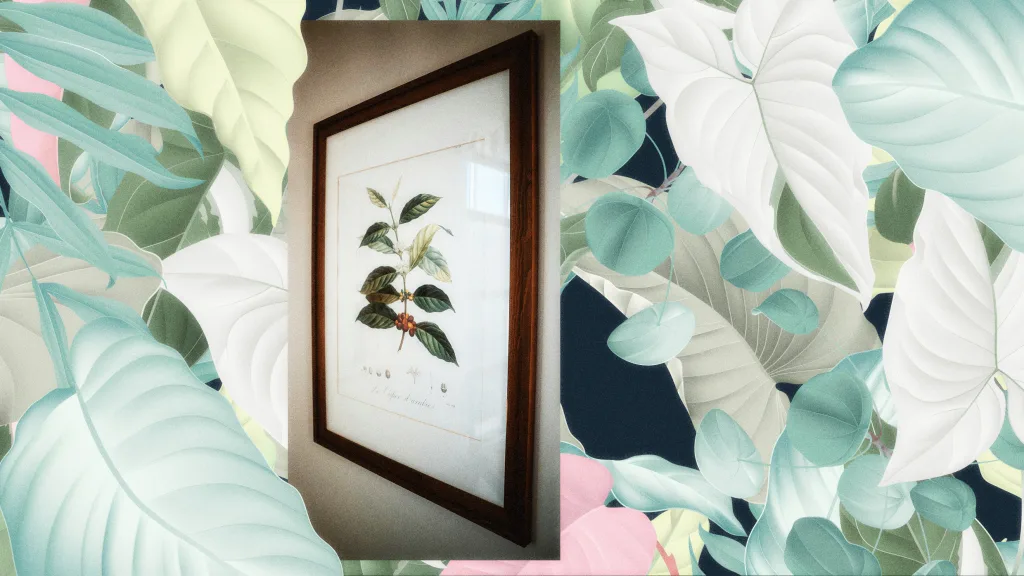
Embrace natural patterns and decor
Bochart recommends seeking out natural fractal patterns for decor, which are “patterns within nature that are repeated on different scales . . . found in almost in every natural item.”
“Science is telling us that when we’re exposed to a multitude of fractal patterns, especially at a medium density, we get positive stimulation . . . so we’re able to process information faster and in a more relaxed way,” she says. “I even have some seashells within my environment.”
Mullenix recommends considering hanging up some “nature-inspired art—photos or paintings that show green forests, waterfalls, flowering plants, etc., and are rotated each season. Even images of nature can provide a boost when the real thing is hard to come by.”
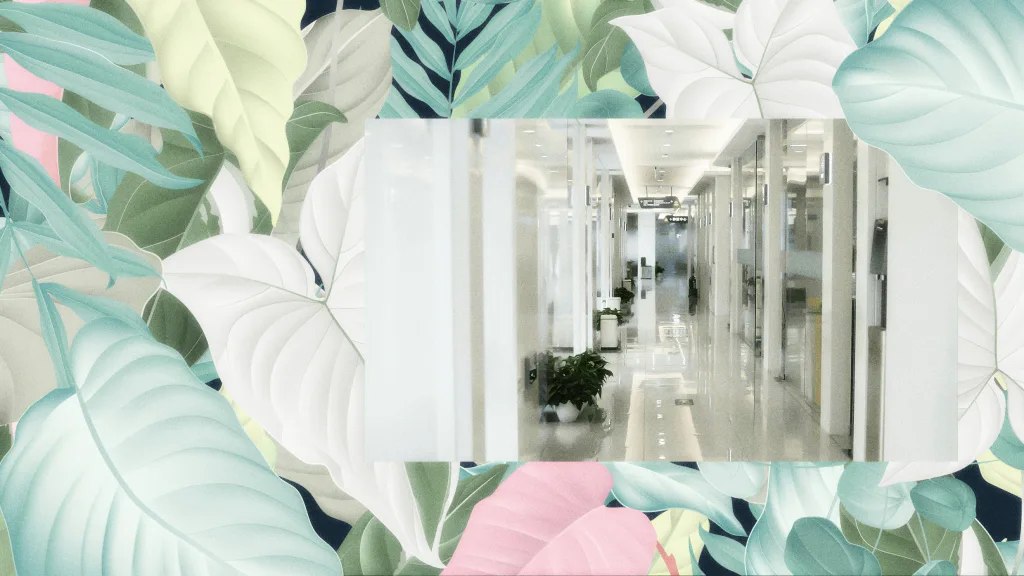
Build movement into your day
Humans are not built to sit all the time. Lora Cavuoto, head of the University at Buffalo’s Ergonomics and Biomechanics Lab, says that staying seated at a desk for hours at a time without breaks can lead to problems like muscles, tendons, and ligaments wearing down. Cavuoto recommends building in regular breaks to “get up and go get water.” It allows you to stay hydrated, she says, “but it also gets you out of your seat. Get up and go to the bathroom or get coffee.”








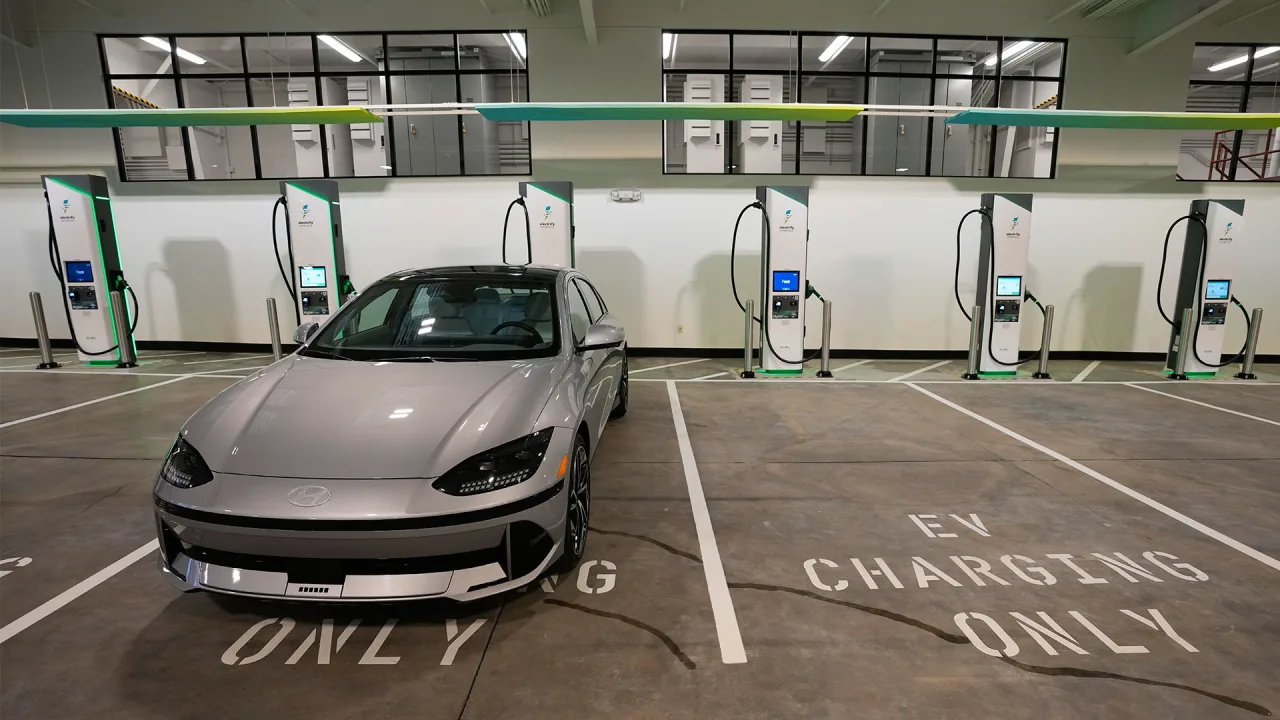



















































































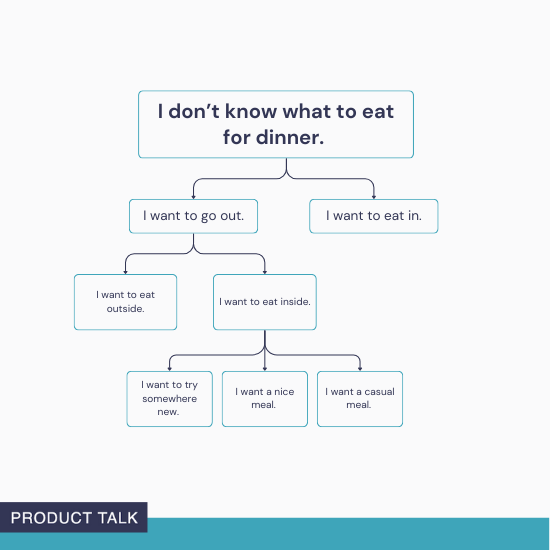

















![Building A Digital PR Strategy: 10 Essential Steps for Beginners [With Examples]](https://buzzsumo.com/wp-content/uploads/2023/09/Building-A-Digital-PR-Strategy-10-Essential-Steps-for-Beginners-With-Examples-bblog-masthead.jpg)


















































